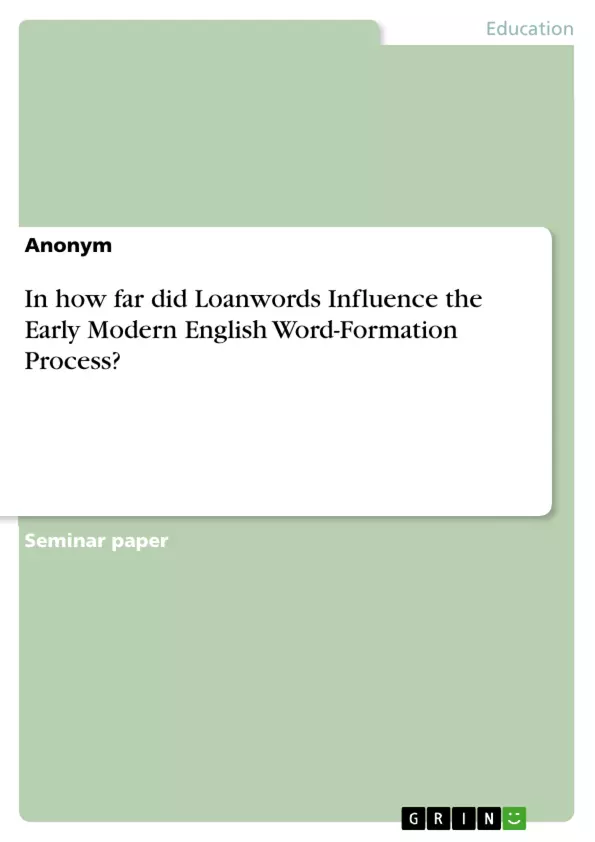The first part of the term paper presents different types of Early Modern English (EME) word-formation processes, in which the main focus is on a detailed description of inflection and derivation as well as compounds. Moreover, a comparisson between these processes and the influence of classical loanwords and loanwords from other languages is to be made, trying to answer the question: In how far did loanwords influence EME word-formation processes?
Inhaltsverzeichnis (Table of Contents)
- Introduction
- Word-formation processes
- Inflection and Derivation
- Compounds
- Other word-formation processes
- Loanwords and their influence
- Classical loans
- Loanwords from other languages
- Conclusion
Zielsetzung und Themenschwerpunkte (Objectives and Key Themes)
The main objective of this term paper is to analyze the influence of loanwords on word-formation processes in the Early Modern English (EME) period. The paper will explore the significance of borrowing words from other languages compared to the creation of new words through internal word-formation processes during this period.
- Word-formation processes in EME, particularly inflection, derivation, and compounding
- The impact of classical loanwords on English vocabulary
- The influence of loanwords from various languages on EME word-formation
- The relative significance of borrowing and internal word-formation in EME vocabulary enrichment
Zusammenfassung der Kapitel (Chapter Summaries)
- Introduction: This chapter provides an overview of English vocabulary growth, highlighting the significant role of historical events and the borrowing of words from other languages, particularly during the EME period. It introduces the term paper's focus on loanwords' influence on word-formation processes in EME.
- Word-formation processes: This chapter examines the mechanisms of creating new words in English, focusing on the distinction between inflection and derivation, as well as the formation of compounds. The chapter uses examples to illustrate these processes and emphasizes the significance of internal word-formation in expanding the English lexicon.
- Loanwords and their influence: This chapter discusses the influence of loanwords, particularly from classical languages and other languages, on the English vocabulary. It explores the impact of these borrowed words on the existing word-formation processes in EME.
Schlüsselwörter (Keywords)
The key terms and concepts explored in this term paper include Early Modern English (EME), word-formation processes, inflection, derivation, compounding, loanwords, classical loans, vocabulary enrichment, and the impact of borrowing on language development.
- Quote paper
- Anonym (Author), 2015, In how far did Loanwords Influence the Early Modern English Word-Formation Process?, Munich, GRIN Verlag, https://www.grin.com/document/378582



